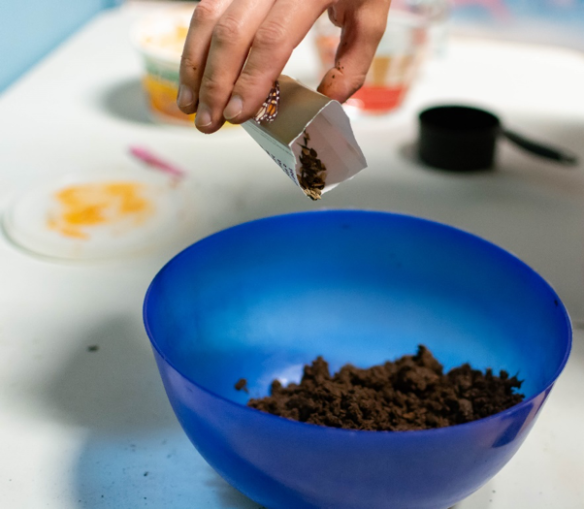This month in Jeansboro Junction we are creating seed bombs! Join us at the Greensboro Science Center (GSC) on Tuesdays and Thursdays at 10:30am, or keep reading to make this craft at home!
What animal at the GSC smells like buttered popcorn? The binturong! That’s not the only strange fact about these awesome creatures. Binturongs are often called bear cats, though they are not related to either animal. They are in the same family as another GSC resident, the fossa.
Unfortunately, binturongs are greatly affected by habitat loss. They need trees not only for their food, but also for shelter. Binturongs are excellent climbers due to their flexible ankles and prehensile tail. Their tail is bare on the bottom to assist the binturong in gripping branches, and their ankles can rotate 180 degrees, allowing them to climb down tree trunks headfirst. Human development continues to fragment the binturongs habitat, making it harder for them to find a mate.
Binturongs do their part to grow their own habitat. Although they are classified as carnivores, most of their diet is made up of fruit. When they eat fruits, the seeds are dispersed in their dung, which acts as fertilizer for new plants! One species of fruit, the strangler fig, needs to be dispersed by binturongs so that the seeds are softened enough to take root.
While binturongs live thousands of miles away from us, there are things we can do for animals affected by habitat loss right here in North Carolina! Some of these animals include our local pollinators such as bees and butterflies. As we move into the cooler months of fall, we can begin planting flowers and other plants to help out these animals. To get started, we have a cool DIY activity for you to do at home that will be fun for you and beneficial to our local pollinators: Seed Bombs!
DIY Seed Bombs
What you will need: Air-dry clay, potting soil or compost, water, seeds, a large mixing bowl, a measuring cup of any size
To choose seeds that will be the most beneficial to your area, click here.

Step 1: Take 1 part clay, 1 part water, and 2 parts potting soil or compost and combine them in your mixing bowl.

Step 2: Use your hands (or a large spoon) to mix the ingredients together, adding water as necessary. Your final mixture should be similar to Play-Doh in consistency.

Step 3: Add your seeds of choice to the mixture and mix thoroughly.

Step 4: Form the mixture into balls or another fun shape of your choosing.

Step 5: Allow 2-3 days for your seed bombs to dry and then toss them wherever you would like your seed bombs to grow! Seed bombs don’t require care or attention so they can be placed wherever you would like to see your flowers. Visit them often in the Fall and Spring to see if you have any insect visitors!

Now your seed bombs are complete!







